CircuiTikz package
Introduction
This article explains basic usage of the CircuiTikz package which provides a set of macros for typesetting electrical and electronic networks. To use this package it must be imported by writing
\usepackage{circuitikz}
in your LaTeX document preamble. The environment circuitikz can then be used to typeset diagrams using TikZ syntax. CircuiTikz includes several nodes that can be used with standard TikZ syntax; the following example uses a node called variable cute inductor:
\documentclass{article}
\usepackage{circuitikz}
\begin{document}
\begin{center}
\begin{circuitikz}
\draw (0,0) to[ variable cute inductor ] (2,0);
\end{circuitikz}
\end{center}
\end{document}
This example produces the following output:
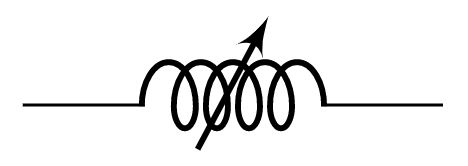
A working example
As noted, to draw electrical network diagrams you use standard TikZ syntax as demonstrated in the following, more complex, example:
\documentclass{article}
\usepackage{circuitikz}
\begin{document}
\begin{center}
\begin{circuitikz}[american voltages]
\draw
(0,0) to [short, *-] (6,0)
to [V, l_=$\mathrm{j}{\omega}_m \underline{\psi}^s_R$] (6,2)
to [R, l_=$R_R$] (6,4)
to [short, i_=$\underline{i}^s_R$] (5,4)
(0,0) to [open, v^>=$\underline{u}^s_s$] (0,4)
to [short, *- ,i=$\underline{i}^s_s$] (1,4)
to [R, l=$R_s$] (3,4)
to [L, l=$L_{\sigma}$] (5,4)
to [short, i_=$\underline{i}^s_M$] (5,3)
to [L, l_=$L_M$] (5,0);
\end{circuitikz}
\end{center}
\end{document}
This example produces the following output:
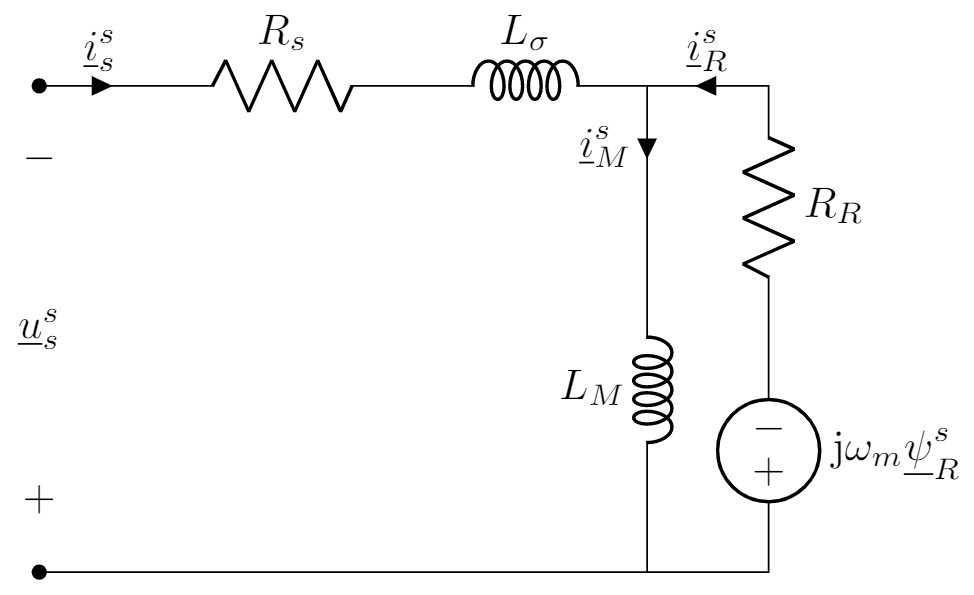
The nodes short, V, R and L are presented here, but there a lot more—some are listed in the next section.
List of some node types
Some of the elements provided by CircuiTikz are listed below, together with links that you can open directly in Overleaf to produce the tables. See the The circuitikz package documentation for additional node types.
Monopoles
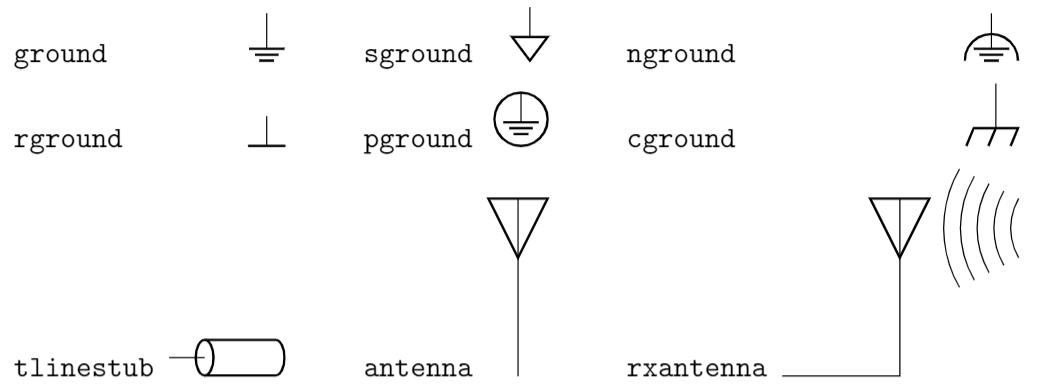
Open this table of circuitikz monopole nodes in Overleaf.
Bipoles
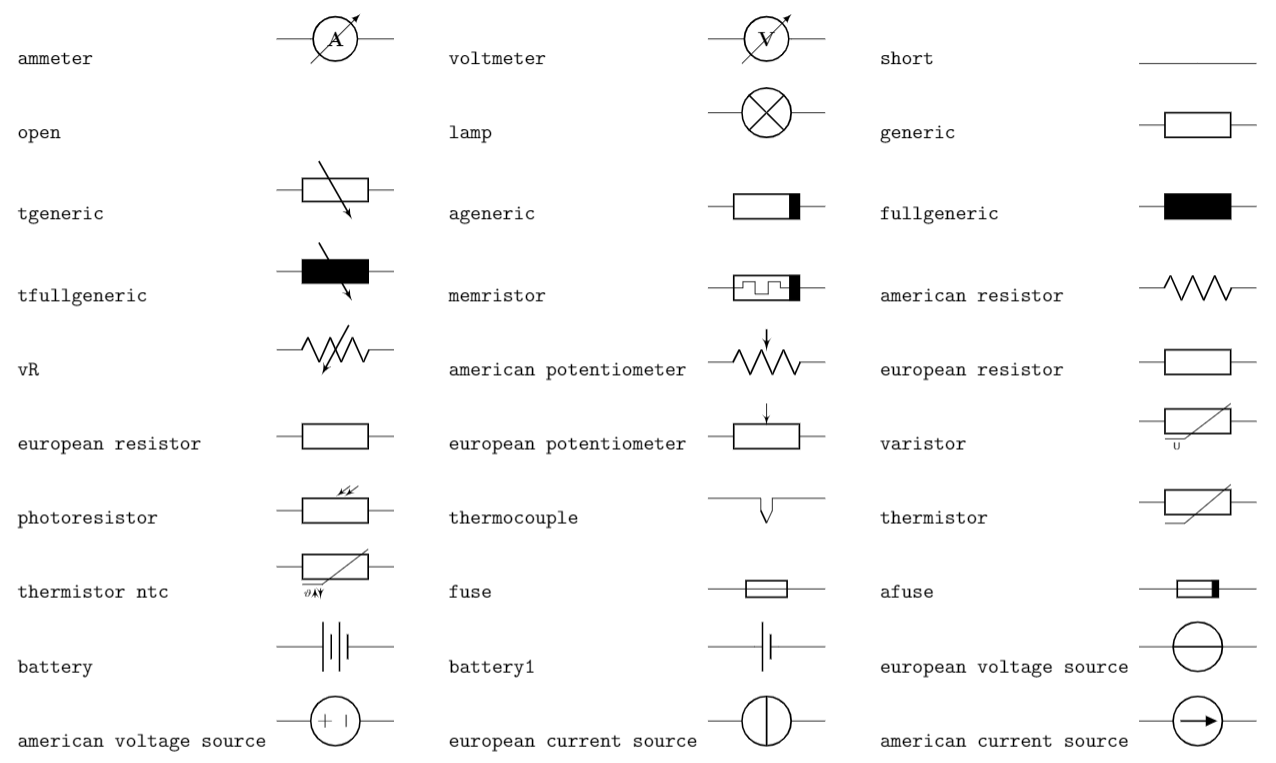
Open this table of circuitikz bipole nodes in Overleaf.
Diodes
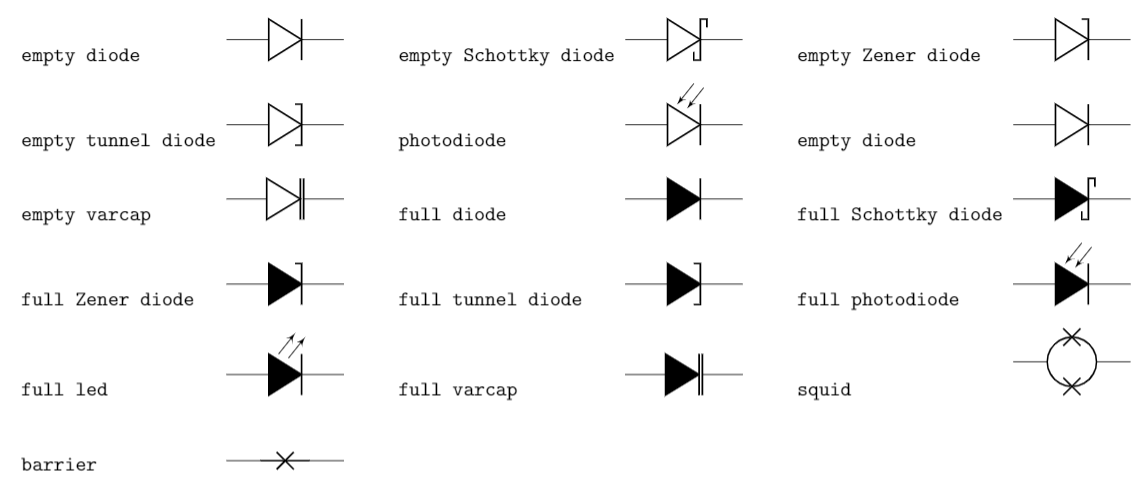
Open this table of circuitikz diode nodes in Overleaf.
Dynamical bipoles

Open this table of circuitikz dynamical bipole nodes in Overleaf.
Further reading
For more information see:
Overleaf guides
- Creating a document in Overleaf
- Uploading a project
- Copying a project
- Creating a project from a template
- Using the Overleaf project menu
- Including images in Overleaf
- Exporting your work from Overleaf
- Working offline in Overleaf
- Using Track Changes in Overleaf
- Using bibliographies in Overleaf
- Sharing your work with others
- Using the History feature
- Debugging Compilation timeout errors
- How-to guides
- Guide to Overleaf’s premium features
LaTeX Basics
- Creating your first LaTeX document
- Choosing a LaTeX Compiler
- Paragraphs and new lines
- Bold, italics and underlining
- Lists
- Errors
Mathematics
- Mathematical expressions
- Subscripts and superscripts
- Brackets and Parentheses
- Matrices
- Fractions and Binomials
- Aligning equations
- Operators
- Spacing in math mode
- Integrals, sums and limits
- Display style in math mode
- List of Greek letters and math symbols
- Mathematical fonts
- Using the Symbol Palette in Overleaf
Figures and tables
- Inserting Images
- Tables
- Positioning Images and Tables
- Lists of Tables and Figures
- Drawing Diagrams Directly in LaTeX
- TikZ package
References and Citations
- Bibliography management with bibtex
- Bibliography management with natbib
- Bibliography management with biblatex
- Bibtex bibliography styles
- Natbib bibliography styles
- Natbib citation styles
- Biblatex bibliography styles
- Biblatex citation styles
Languages
- Multilingual typesetting on Overleaf using polyglossia and fontspec
- Multilingual typesetting on Overleaf using babel and fontspec
- International language support
- Quotations and quotation marks
- Arabic
- Chinese
- French
- German
- Greek
- Italian
- Japanese
- Korean
- Portuguese
- Russian
- Spanish
Document structure
- Sections and chapters
- Table of contents
- Cross referencing sections, equations and floats
- Indices
- Glossaries
- Nomenclatures
- Management in a large project
- Multi-file LaTeX projects
- Hyperlinks
Formatting
- Lengths in LaTeX
- Headers and footers
- Page numbering
- Paragraph formatting
- Line breaks and blank spaces
- Text alignment
- Page size and margins
- Single sided and double sided documents
- Multiple columns
- Counters
- Code listing
- Code Highlighting with minted
- Using colours in LaTeX
- Footnotes
- Margin notes
Fonts
Presentations
Commands
Field specific
- Theorems and proofs
- Chemistry formulae
- Feynman diagrams
- Molecular orbital diagrams
- Chess notation
- Knitting patterns
- CircuiTikz package
- Pgfplots package
- Typesetting exams in LaTeX
- Knitr
- Attribute Value Matrices
Class files
- Understanding packages and class files
- List of packages and class files
- Writing your own package
- Writing your own class